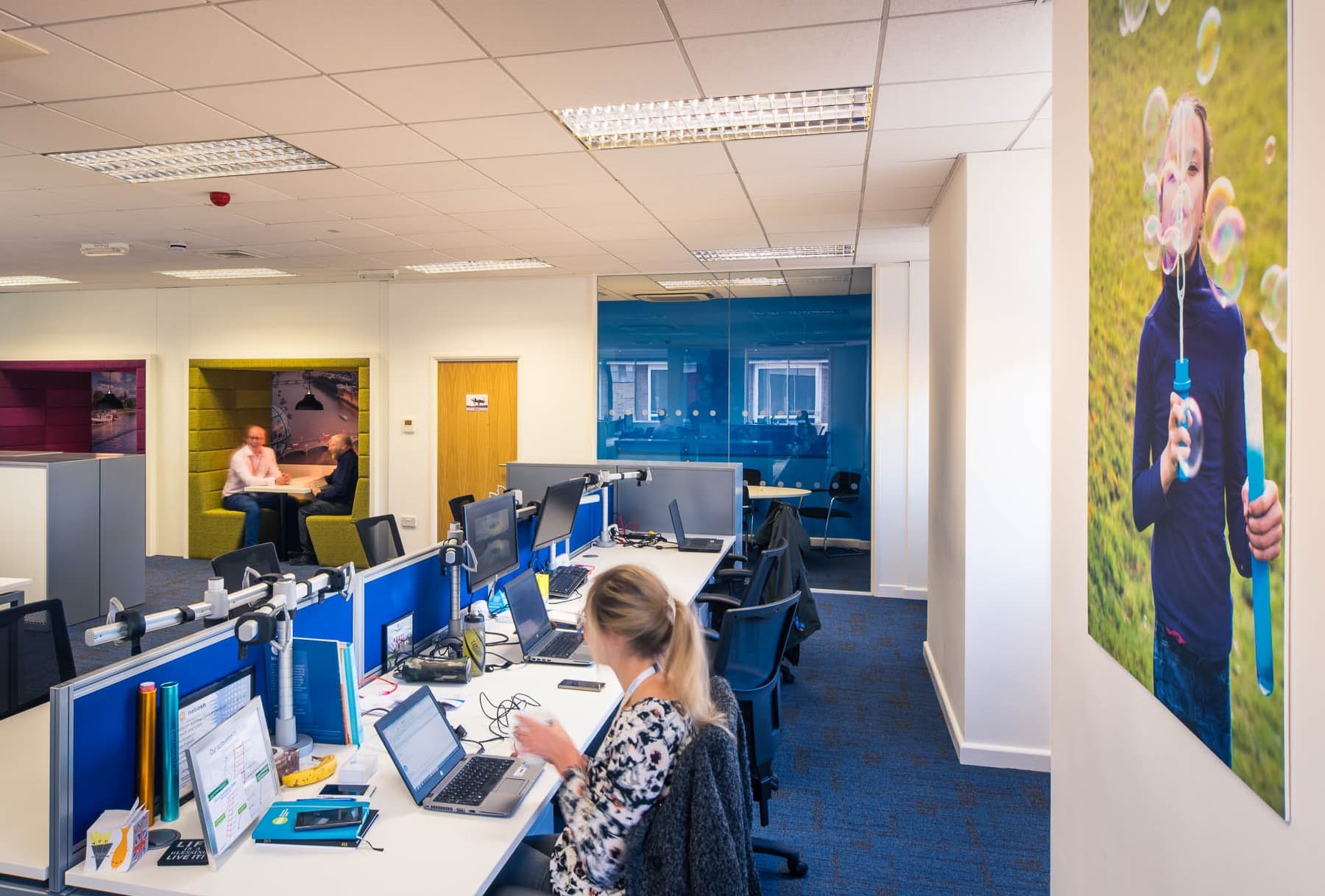A book called
The Elemental Workplace from the former Workplace Director of Sky Neil
Usher lays out in simplified form the most important factors firms need
to consider in the design of their workplaces. It sets out twelve aspects of a workplace that make it
most effective for individuals and so by definition the organisation for
whom they work. This direct link is a result of the value of knowledge
based work.
It identifies six key areas where different approaches could be taken:
- Lighting – improving daylight provision and the quality of artificial lighting
- Ventilation / air quality – increasing ventilation flows and reducing Volatile Organic Compounds and carbon dioxide
- Thermal comfort – including solar overheating in the working environment and enabling an individual to control the temperature of their immediate space
- Noise and acoustics – reducing environmental noise (roads etc.), white noise (air conditioning systems etc.) and pink noise (human voice frequency)
- Interaction – increasing the control and self-determination of the office environment including control of lighting, ventilation, physical desk setup and chosen setting
- Visual elements – including plants and outside views, nature and materials
It also notes that relatively rapid payback on investment in these areas can be achieved, this is estimated to range between two to six years, with some individual elements seeing payback in as little as six months. The findings come amid growing scrutiny of the UK’s productivity versus other countries. Recent figures show productivity in the UK continues to lag behind the levels seen before the financial crisis.
By focusing on people’s basic needs when designing a workplace, we can not only address their individual needs, but also drive value in the organisation.
Choose Fresh Workspace to redesign your workplace
Our experienced team can make these different approaches a reality for your business. Make a workplace your employees would love to work in! Why not give our team a call today?
